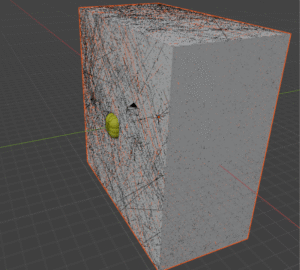With the advent of new particle physics experiments, there is now an ever-growing need to quantify the response of a detector using proper simulation techniques, even before the detector is envisaged. Many particle generators such as MadGraph for hadronic interactions and Ptarmigan for electron-photon interactions can generate the new signal particles following new models.
The detector response to new signal particles can be quantified by Geant4, a general-purpose simulation toolkit to simulate particle’s passage through materials and Allpix-squared, a software framework to simulate the response of solid-state detectors. Using these software setups, one can play with the phenomenology of the new signal models and bridge the gap between high energy theorists and experimentalists.
At present, the group’s focus is on simulating the response of a cryogenic quantum sensor, known as transition edge sensors (TES). This is done with the help of G4CMP [1]. The idea is to see what phase-space of dark matter search will be accessible using TES in underground laboratories such as Jaduguda Underground Science Laboratory (JUSL) [2].

References: [1]
G4CMP: Condensed matter physics simulation using the Geant4 toolkit
M.H. Kelsey (Texas A-M), R. Agnese (Florida U.), Y.F. Alam (Texas A-M), I. Ataee Langroudy (Texas A-M), E. Azadbakht (Texas A-M) et al.
e-Print: 2302.05998 [hep-ex]
DOI: 10.1016/j.nima.2023.168473 (publication)
Published in: Nucl.Instrum.Meth.A 1055 (2023), 168473
[2] https://www.saha.ac.in/web/about-dino